Search Results for Tag: climate
Young climate enthusiasts sharpen skills at ‘2° Campus’
For the past two years, the German chapter of the World Fund for Nature (WWF) has organized a project called “2° Campus” or “Two degrees Celsius Campus.” It’s targeted at young students in Germany between the ages of 15 and 19.
The aim is to bring together young people interested in climate issues and science and encourage them to work on related subjects ranging from energy, mobility, building insulation to food. As part of the project, the students visited German universities, spoke with scientists and even got the chance to work on research projects with them.
As the project drew to a close this week in Berlin, Global Ideas reporter Julia Henrichmann caught up with some of the young climate enthusiasts and found out what drives them to engage with climate and environmental issues.
Enno Gerhard, 16, from Bremen
Global Ideas: What made you take part in the project?
I happened to read about it in a newsletter. I believe that if we don’t change the world, our future generations will not survive.
 What was your focus during the project?
What was your focus during the project?
I always wanted to find out more about solar modules. We tried to figure out how to build organic solar cells. In the project, I was responsible for researching the variation of different temperatures in solar cells.
Has the 2° Campus project changed you as a person?
After taking part in the 2° Campus, I stopped eating meat, we even changed our electricity supplier at home. Now I would love to study physics to help build smart grids in Germany and to find new solutions for the power network (especially for alternative forms of energy).
What do you think are the most pressing climate issues?
We absolutely have to find quick answers for mobility, for example with electric cars. We also have to ensure that issues such as mobility and energy are brought together such as setting up new smart grids or building energy efficient buildings.
Lukas Jochum, 17, from Ottweiler in Saarland
Global Ideas: What got you interested in the project?
My teacher read about the project and asked me if I wanted to be part of it. I always wanted to save the earth and I’m already active in the Green Party.
What did you work on in the project?
 We worked on refitting old school buildings. For example, we looked at new ways of insulating buildings by installing new windows.
We worked on refitting old school buildings. For example, we looked at new ways of insulating buildings by installing new windows.
What do you do personally to reduce your carbon footprint?
I always use my bicycle, I am vegetarian and I’m trying to convince my parents not to use the car that often.
How do you see the state of the planet in 30 years?
My dream is that we ban nuclear energy worldwide.
Antonia Bürke, 17, from Leipzig
Global Ideas: What’s your motivation for participating in the project?
Climate change concerns us all.
What did you work on in the project?
In the project, I was responsible for inventing new coloring for solar cells. We used natural colors from tea, for example. It worked pretty well!
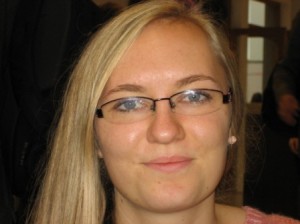 What do you do to combat climate change?
What do you do to combat climate change?
I don’t eat meat, I always use my bicycle or use public transport. And I try and convince my friends to do that as well.
Where do you see the world in 30 years?
My dream is that many more people use trains and buses instead of cars. But for that, public transport options need to be more attractive. I hope that the famous German “Energiewende” (the transition from nuclear and fossil fuels to renewable sources of energy) will be in force and implemented by other countries as well.
Helen Jerg, 16, from Mannheim
Global Ideas: What prompted you to apply for the project?
We are going to be here for a long time and if we don’t change our planet, then our future is uncertain.
What was your role in the project?
 I want to study construction engineering to learn how to upgrade old buildings. My idea in the WWF project was not only to refit buildings and to put in new windows and to insulate walls but also to find a different use for school buildings. For example, why don’t we use existing school buildings and convert them into youth hostels over the holidays? That way no extra energy is wasted and the school buildings, that lie idle over the holiday period, are put to good use.
I want to study construction engineering to learn how to upgrade old buildings. My idea in the WWF project was not only to refit buildings and to put in new windows and to insulate walls but also to find a different use for school buildings. For example, why don’t we use existing school buildings and convert them into youth hostels over the holidays? That way no extra energy is wasted and the school buildings, that lie idle over the holiday period, are put to good use.
What’s your personal contribution to lowering emissions?
I am vegetarian and I try to convince my friends and family not to eat that much meat anymore. I also try to use organic products as much as I can.
What do you think the world will look like in 2043?
I hope that everybody will use green energy then, that many people turn vegetarian and that a critical mass of people become aware of the dangers of climate change.
Note: The name “2 degrees Celsius Campus” refers to a WWF study that shows greenhouse gas emissions in Germany can be cut by 95 percent by 2050 in order to limit global warming to a maximum of 2 degrees Celsius compared to pre-industrial levels. The study contains concrete suggestions for what needs to change in the fields of energy, mobility, housing and food in order to slash emissions.
Study says livestock emissions can be cut by 30 percent
We’ve all heard about how cows and other grass-eating cattle release methane, a powerful greenhouse gas (GHG), when they belch and fart. The United Nations has suggested in the past that the environmental impact of cattle might be even more damaging than the emissions of cars and trucks combined. Now, a new study by the Food and Health Organization (FAO) says that greenhouse gas emissions by the livestock sector could be cut by as much as 30 percent if farmers adopt better techniques within existing production systems.
Titled, Tackling climate change through livestock: A global assessment of emissions and mitigation opportunities, the new study says emissions linked to livestock supply chains add up to 7.1 gigatonnes of carbon dioxide equivalent (CO2-eq) per year – or 14.5 percent of all human-caused GHG releases.
That’s less than the 18 percent that was cited by the FAO in a widely-quoted study in 2006 (Livestock’s Long Shadow) on emissions linked to global meat production. The FAO says the new figure is based on a new revised modelling framework and updated data.
The latest report pinpoints the main sources of emissions at different stages of various livestock supply chains – food production and processing (45 percent of the total), outputs of greenhouse gases during digestion by cows (39 percent) and manure decomposition (10 percent).
So, how can livestock production – a wide-ranging, globe-spanning activity which varies greatly from country to country – lower its emissions? The FAO says it will require a mix of policies, incentives, and on-the-ground work.
The FAO study however says there is no need to shift from small-scale and backyard to industrial livestock farming. It says farmers need to more widely adopt best practices and technologies in feeding, health, husbandry and manure monitoring as well as make greater use of underused technologies such as biogas generators and energy saving devices.
“These efficiency gains can be achieved by improving practices, and don’t necessitate changing production systems,” Ren Wang, FAO assistant director general for agriculture and consumer protection, says. “But we need political will, better policies and most importantly, joint action.”
Scientists more certain humans cause global warming
A much-awaited United Nations report on the science behind climate change says scientists are 95 percent sure that humans are the “dominant cause” of global warming since the 1950s. The document, which is meant to serve as a guideline for policymakers to shift towards greener energies, warns that the impact of greenhouse gas emissions could linger for centuries.
The report by the Intergovernmental Panel on Climate Change (IPCC) is considered the most comprehensive document on our understanding of the mechanics of a warming planet and the physical evidence behind it.
The following are the main findings of the report:
- Global warming is “unequivocal,” on the ground, in the air and in the oceans. And It’s “extremely likely” or 95 percent likely that human activities, led by the burning of fossil fuels, are the main cause of a rise in temperatures since the 1950s.
- Concentrations of carbon dioxide and other greenhouse gases in the atmosphere have increased to levels that are unprecedented in at least 800,000 years. The burning of fossil fuels is the main reason behind a 40 percent increase in C02 concentrations since the industrial revolution.
- Short, individual periods, such as 1998, which was an unusually warm year, are influenced by natural variability and are not an indicator of long-term climate trends.
- Global temperatures are likely to rise by 0.3 to 4.8 degrees Celsius, or 0.5-8.6 Fahrenheit, by the end of the century depending on how much governments control carbon emissions.
- Sea levels are expected to rise a further 10-32 inches (26-82 centimeters) by the end of the century. That will pose a threat to coastal cities from Shanghai to San Francisco.
- The Greenland and Antarctic ice sheets have been shrinking over the past two decades. Glaciers have continued to melt almost all over the world. Arctic sea ice has shrunk and spring snow cover has continued to decrease, and it is “very likely” that this will continue.
Unicef: Children will be hit hardest by climate change

Unicef says children have been left out of the climate change debate (Photo: CC BY-SA 2.0 by Dhilung Kirat/flickr.com)
As leading scientists gather in Stockholm to produce a detailed review of our knowledge of climate change so far, a new study released this week says that rising global temperatures pose the biggest risks to children.
Children’s charity Unicef says health problems, a relative lack of resources, vulnerability to disease, malnutrition and migration make children especially vulnerable to climate change. Despite that, the group says, children have largely been left out of the debate so far.
“We are hurtling towards a future where the gains being made for the world’s children are threatened and their health, wellbeing, livelihoods and survival are compromised … despite being the least responsible for the causes,” David Bull, Unicef’s UK executive director, said “We need to listen to them.”
In the paper, the group warns that changing weather in the form of an increase in droughts, floods, heatwaves and storms are among the most pressing concerns facing the young.
“The legacy of climate change is no longer a distant projection, but will be felt by children born this year and beyond. A child born in 2013 will be 17 in 2030 and 37 in 2050, when the worst impacts of climate change will begin to be felt,” the charity says.
Today, 700 million children live in the ten countries most vulnerable to climate change, and it’s estimated that 25 million more children will be malnourished as a result of climate change by 2050.
Meanwhile, the Intergovernmental Panel on Climate Change (IPCC) meeting in Stockholm is expected to warn that climate change is almost certainly caused by human actions. Scientists are expected to say it will lead to a global temperature rise likely to top 2C, with related effects including the shrinking of the Arctic ice cap and glaciers, a rise in sea level by nearly 1 meter by the end of this century and more extreme rainfall in parts of the globe.
Climate champ – ‘Climate change fight will dictate the future’
Do you feel responsible for our future? Are you tired of waiting for a breakthrough at climate conferences? If you are already taking action yourself, you are our ClimateChamp and we want to get to know you! Answer our questionnaire to become a part of our new blog series, take your chance to be nominated as a Climate Champ. This time we feature Mourad Farahat from Cairo.
What is your name? How old are you? And where do you live?
My name is Mourad Farahat, I am 16 and I live in the Cairo suburb of El Tagamoa El Khames.
How does climate change affect your everyday life in your community?
Climate change has had several adverse effects on the Egyptian community, and could lead to damage beyond repair. For example, it has caused an ever-increasing amount of problems in the food sector, as food production is not able to keep up with the increase in the Egyptian population. The effects are amplified by the incessant erosion of the Nile Delta. As seawater levels rise, the once fertile Nile Delta begins to absorb saltwater instead of freshwater, making it infertile. This has led to rising food and water prices, which widens the gap between rich and the poor.
What prompted you to get involved in fighting climate change?
There was no specific trigger which encouraged me to start fighting climate change. Rather, it was the fact that the fight against climate change has given me the opportunity of a lifetime – to be part of a cause which will dictate the future.
How exactly do you fight climate change?
I fight climate change in any legal way I can. I have joined an organization called youthinkgreen, which has given me a perspective on the fight against climate change on a global scale. And I am a part of a local grassroots division of youthinkgreen in Egypt which promotes green action, most notably a recycling project which we have successfully initiated in our school and are hoping to expand. It may not seem like much, but it is a start nonetheless.
What do you have to say to climate change deniers?
There is ample evidence which proves beyond reasonable doubt that climate change is not only real, but that it has already started taking a toll on our planet. Now is not the time for petty squabbles about the existence of climate change; it is time for us to ask ourselves how we, as the human race, can overcome this global epidemic.
Worst case scenario: What do you think your city will look like 10 years from now if no action is taken to fight climate change?
The city of Cairo will be dirtier, louder, more polluted and consequently its inhabitants will be more prone to pollution-induced illnesses, gridlocks and as a result will consume more energy. The number of slums will continue to grow in correlation with the population and the living standards of each Egyptian. People will be less happy with their quality of life, as food and utility prices will continue to rise. It is a very bleak outlook, and a slightly frightening one for that matter.
Best case scenario: What do you think your city will look like 10 years from now, if more and more action is taken to fight climate change?
People will have a completely different outlook on life. Many people will have found a cause worthy of their support, which would completely alter their outlook on life. In other words, the city and its inhabitants will respond to the actions taken against climate change. This could translate into more job opportunities in the field of sustainable technologies, a greener Cairo and an increase in foreign investment in the Egyptian “green” market, which would bolster the economy.
Briefly, what do you want your government to do as far as climate change is concerned?
I am of the opinion that the government should re-evaluate its expenditures and prioritize investment in green technology which offers a sustainable solution to Egypt’s pressing problems. Also, the government should begin taking action against rising sea levels in the Nile Delta, which threatens to displace seven million people and cause massive food shortages.
How can interested people take part in your project?
Our project’s aim is to encourage people around the world to live sustainably. Therefore, I believe that anyone who is interested in my project should independently develop a sustainable framework suitable for his/her local community, and seek support for its application. By doing so he/she would be advocating a sustainable lifestyle and making it available to the people who require it, which is what we aim to do at youthinkgreen (www.youthinkgreen.org).



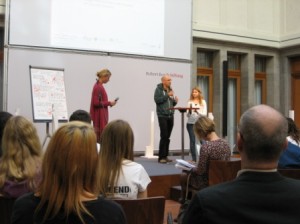

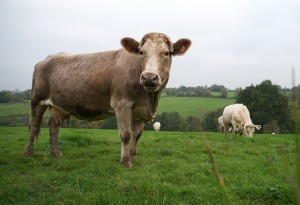
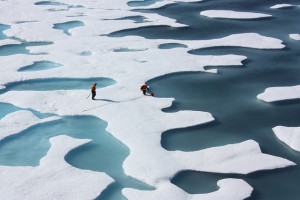
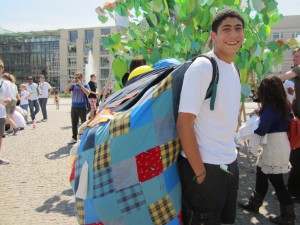




Feedback